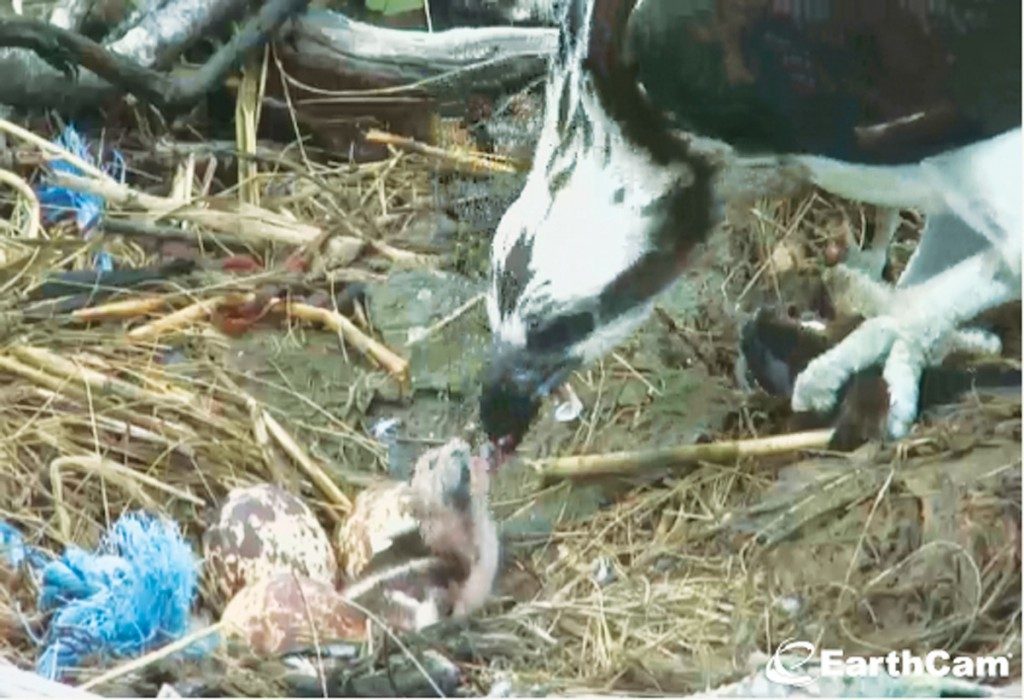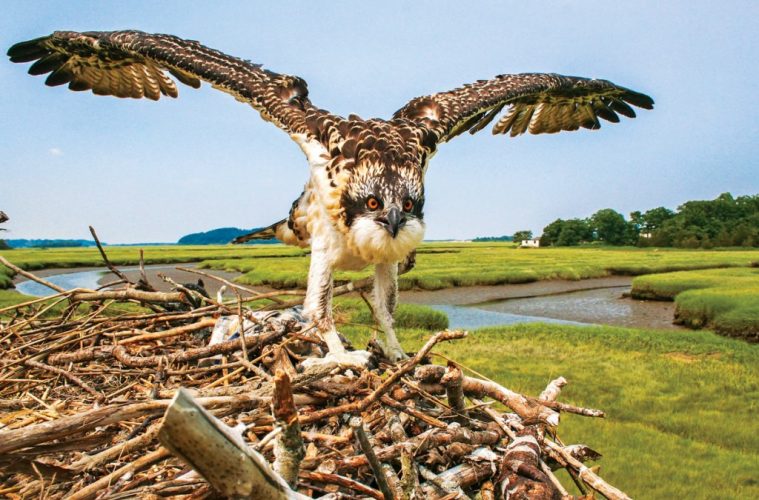Essex County Greenbelt’s new OspreyCam offers a rare live glimpse into the fascinating world of nesting ospreys.
This spring, Essex County Greenbelt rolled out a brand new and dramatically expanded Osprey Program, with high hopes of teaching the public about this magnificent bird of prey and bellwether of a healthy coastal ecosystem.
The star of the program is the OspreyCam, which in April started streaming live video of the Cox Reservation’s resident pair of ospreys, Allyn and Ethel, after their return this spring to nest and mate.
Greenbelt could not have asked for a more exciting response. Almost 6,000 people logged in to the website through Facebook, and the comments poured in. People were enchanted with the birds’ courtship, their soft calls to each other, and their construction of the nest, where the female later laid three eggs. (One viewer watched every morning as she sipped her coffee.)

A baby osprey hatches on the OspreyCam
Viewers were even more thrilled to see the one chick that hatched, flexing his little wings and eagerly eating fish fed to him by his parents. They were looking forward to watching that little chick grow and fledge at the end of the summer. Sadly, in June, that chick was taken in the night, likely by a great horned owl. Nature had dealt a cruel lesson in her ways. Viewers were devastated, and condolences poured in from Massachusetts and as far away as Florida and France.
Members of the Greenbelt staff were devastated, too. What could they tell viewers? What could ease the pain of loss for people who had become so attached to the osprey family? Well, it was certainly a teachable moment for children. They could be told the importance of the big picture, for one. Having this pair hatch three eggs for two years in a row and fledge one chick last year were huge achievements, not to mention that it was the first osprey ever hatched at the Cox Reservation. Last year’s chick, named Eben, migrated south with his parents and will return north next spring to start his own family. Allyn and Ethel, now experienced parents, will also return to start another new family.
All over Essex County, osprey numbers are up; there are now 15 or 16 pairs, compared to 1990 when there were none. To help the ospreys, Greenbelt started eight years ago to build 12-foot-high nesting platforms to replace lost nesting habitats—this was the beginning of the Osprey Program. Other platforms are scattered over the Essex County coastline and mapped to a database on Greenbelt’s website. The website now has a large section devoted to osprey behavior and identification, along with the webcam and many gorgeous photos. After the resident ospreys leave, Greenbelt will stream archival footage of the young family until next March. To see it, go to ecga.org/what_we_do/osprey_program.
The new Osprey Program also asks local people to help monitor nests and report back to Greenbelt. Six kiosks are going up this summer at nesting platforms, with accompanying brochures. And for the first time, Greenbelt will work with a university researcher to tag and track young migrating osprey by satellite.
Next spring, everyone will be waiting for the return of Allyn and Ethel. One thing’s for sure: There will be 6,000 people watching and hoping for new life in 2014.

